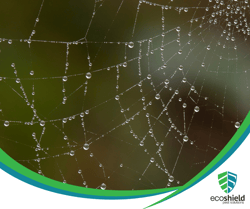 Have you ever found yourself staring at those intricate webs in your corners and ceilings, wondering about the difference between cobwebs and spiderwebs? In this blog post, we're going to dive into the fascinating world of these delicate creations. We'll uncover the mysteries behind cobwebs and spiderwebs, exploring what sets them apart, introducing you to the eight-legged artists behind them, and even giving you insights into what these webs might be telling you about your living space.
Have you ever found yourself staring at those intricate webs in your corners and ceilings, wondering about the difference between cobwebs and spiderwebs? In this blog post, we're going to dive into the fascinating world of these delicate creations. We'll uncover the mysteries behind cobwebs and spiderwebs, exploring what sets them apart, introducing you to the eight-legged artists behind them, and even giving you insights into what these webs might be telling you about your living space.
What are Cobwebs?
Cobwebs are intricate structures woven by spiders, typically using silk produced by their spinnerets. These silken creations serve various purposes in the life of a spider. Spider silk, the primary material for cobwebs, is an incredible substance known for its strength and elasticity. It's produced by silk glands in the spider's abdomen, and as the spider releases it through its spinnerets, it solidifies into the fine threads that make up a cobweb.
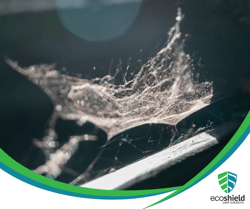 The creation of cobwebs is an essential aspect of a spider's natural behavior. Spiders use their silk for a variety of functions, such as building webs for capturing prey, constructing shelters for protection, and even creating egg sacs to safeguard their offspring. The intricate design of a cobweb serves as an effective tool for trapping and immobilizing insects, allowing the spider to later approach and consume its prey. This remarkable adaptation showcases the versatility and ingenuity of spiders in utilizing their silk for survival.
The creation of cobwebs is an essential aspect of a spider's natural behavior. Spiders use their silk for a variety of functions, such as building webs for capturing prey, constructing shelters for protection, and even creating egg sacs to safeguard their offspring. The intricate design of a cobweb serves as an effective tool for trapping and immobilizing insects, allowing the spider to later approach and consume its prey. This remarkable adaptation showcases the versatility and ingenuity of spiders in utilizing their silk for survival.
Cobwebs occur in a multitude of environments, both indoors and outdoors, and their presence often indicates an active spider population. Different species of spiders create diverse web designs, ranging from classic orb webs to funnel-shaped structures. The type of cobweb a spider constructs is influenced by its species, environment, and hunting strategies. Additionally, factors like humidity and temperature can impact the silk's consistency, affecting the overall structure and appearance of the cobweb.
Are Cobwebs and Spiderwebs the Same Thing?
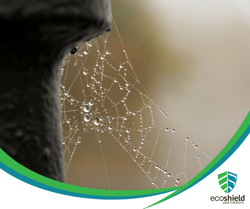 Spiderwebs are delicate formations created by spiders using their silk-producing spinnerets. Spider silk is a remarkable material known for its strength and elasticity, and spiders utilize it for various purposes in their lives. Unlike cobwebs, which are often associated with abandoned or dusty webs, spiderwebs are active, well-maintained structures that spiders use for hunting, shelter, and reproduction.
Spiderwebs are delicate formations created by spiders using their silk-producing spinnerets. Spider silk is a remarkable material known for its strength and elasticity, and spiders utilize it for various purposes in their lives. Unlike cobwebs, which are often associated with abandoned or dusty webs, spiderwebs are active, well-maintained structures that spiders use for hunting, shelter, and reproduction.
The spinning of spiderwebs is a fascinating process. Spiders release silk from their spinnerets, and it solidifies into fine threads as it comes into contact with the air. These threads are then meticulously woven into complex patterns, forming a web that serves as a tool for hunting. Different species of spiders create distinct types of webs, such as orb webs, funnel webs, and sheet webs, each adapted to their specific hunting strategies and environments.
In contrast to cobwebs, which are commonly associated with abandoned spaces, spiderwebs are actively used by spiders. The purpose of a spiderweb is primarily to catch prey. The intricate design of the web allows spiders to detect vibrations caused by trapped insects, alerting them to potential meals. Once caught, the prey is immobilized by the silk, making it easier for the spider to approach and consume.
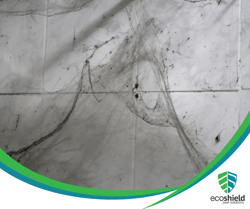 The comparison between cobwebs and spiderwebs lies in their appearance, use, and maintenance. Cobwebs are often irregular, messy collections of silk that may accumulate dust over time, giving them a neglected appearance. On the other hand, spiderwebs are purposefully constructed, well-maintained structures that showcase the spider's craftsmanship. While cobwebs may signify a lack of recent spider activity, spiderwebs are a sign of an active and efficient spider presence, contributing to pest control and maintaining ecological balance.
The comparison between cobwebs and spiderwebs lies in their appearance, use, and maintenance. Cobwebs are often irregular, messy collections of silk that may accumulate dust over time, giving them a neglected appearance. On the other hand, spiderwebs are purposefully constructed, well-maintained structures that showcase the spider's craftsmanship. While cobwebs may signify a lack of recent spider activity, spiderwebs are a sign of an active and efficient spider presence, contributing to pest control and maintaining ecological balance.
In summary, spiderwebs and cobwebs differ not only in their appearance but also in their purpose and the activity of the spiders that create them. Spiderwebs are functional structures actively used by spiders for hunting and survival, while cobwebs may indicate a lack of recent spider activity or maintenance. Understanding these distinctions provides valuable insights into the fascinating world of arachnid behavior and the roles these silk structures play in the ecosystem.
Should I be Concerned About Spiderwebs or Cobwebs in my Home?
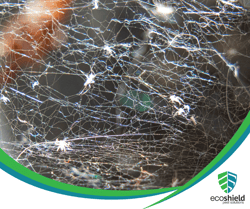 Homeowners generally need not be overly concerned about the presence of cobwebs and spiderwebs in their homes. While these silk structures might be perceived as unsightly, it's essential to understand that spiders play a crucial role in maintaining a balanced ecosystem, primarily by controlling insect populations. Spiders are natural predators that help keep the numbers of flies, mosquitoes, and other pests in check, contributing to a healthier indoor environment.
Homeowners generally need not be overly concerned about the presence of cobwebs and spiderwebs in their homes. While these silk structures might be perceived as unsightly, it's essential to understand that spiders play a crucial role in maintaining a balanced ecosystem, primarily by controlling insect populations. Spiders are natural predators that help keep the numbers of flies, mosquitoes, and other pests in check, contributing to a healthier indoor environment.
In some cases, the spiders responsible for creating these webs are harmless to humans. Common household spiders, such as cellar spiders or house spiders, are not venomous and pose no significant health threat. They prefer quiet, undisturbed areas and often keep to themselves.
However, for those with arachnophobia or concerns about specific venomous spiders common in their region, it's advisable to take preventive measures. For individuals with allergies or respiratory issues, keeping spaces dust-free is crucial, as cobwebs can collect dust over time. In addition, many homeowners find significant peace of mind by removing cobwebs or spiderwebs in their homes.
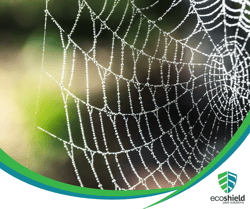 In summary, while cobwebs and spiderwebs are generally harmless and even beneficial in terms of pest control, homeowners with specific concerns or phobias may choose to take preventive measures. When in doubt, it is highly recommended to consult with a pest professional like EcoShield Pest Solutions to determine the best way to remove and prevent webs in your home.
In summary, while cobwebs and spiderwebs are generally harmless and even beneficial in terms of pest control, homeowners with specific concerns or phobias may choose to take preventive measures. When in doubt, it is highly recommended to consult with a pest professional like EcoShield Pest Solutions to determine the best way to remove and prevent webs in your home.
How can I prevent spiderwebs or cobwebs?
Preventing spiderwebs and cobwebs in your house involves a combination of regular cleaning, strategic maintenance, and making your home less appealing to spiders. Firstly, keep your home clean and clutter-free. Regularly dust and vacuum corners, ceilings, and other areas where spiders might build their webs. Pay close attention to windows, door frames, and other entry points. Eliminating dust and removing potential hiding spots will make your home less inviting for spiders.
Seal any cracks or gaps in windows, doors, and walls to prevent spiders from entering your home. Spiders can squeeze through surprisingly small openings, so be thorough in your inspection. Use weather stripping around windows and doors to close gaps, and consider applying caulk to seal any larger openings.
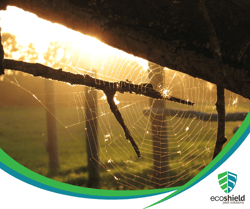 Reduce outdoor lighting, especially near doors and windows, as light attracts insects that spiders feed on. By minimizing the insect population around your home, you can indirectly discourage spiders from building webs in and around your living spaces. If you have outdoor vegetation close to your home, maintain it regularly, as overgrown plants and bushes can provide hiding spots and make it easier for spiders to access your home.
Reduce outdoor lighting, especially near doors and windows, as light attracts insects that spiders feed on. By minimizing the insect population around your home, you can indirectly discourage spiders from building webs in and around your living spaces. If you have outdoor vegetation close to your home, maintain it regularly, as overgrown plants and bushes can provide hiding spots and make it easier for spiders to access your home.
By adopting these preventive measures, you can create an environment that is less conducive to spider activity, minimizing the likelihood of both cobwebs and spiderwebs in your house. Regular maintenance and addressing potential entry points will go a long way in keeping these eight-legged visitors at bay. For homeowners looking to take a more proactive approach, a reputable pest professional can provide the knowledge, tools, and products necessary to protect your home from spiders and their webs.
Can EcoShield Protect my Home from Spiders and Their Webs?
Yes! While spiderwebs aren’t typically a problem in and of themselves, webs can become unsightly, overwhelming, and bothersome, particularly if there are many of them and in high activity areas of the home. That’s why we include dewebbing in all Shield Home Protection Plan services. We feel that the peace of mind of a web-free home far outweighs the potential benefits of leaving spiderwebs in place and instead tackle pest control from a preventative perspective by controlling insect populations, including spiders. Give us a call or fill out the form on this page to get started on your pest-prevention journey!